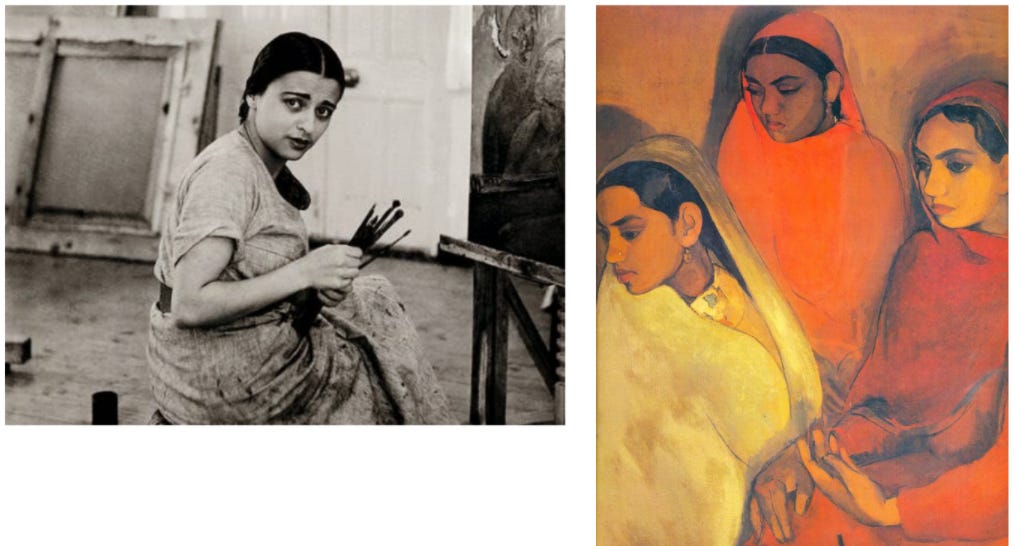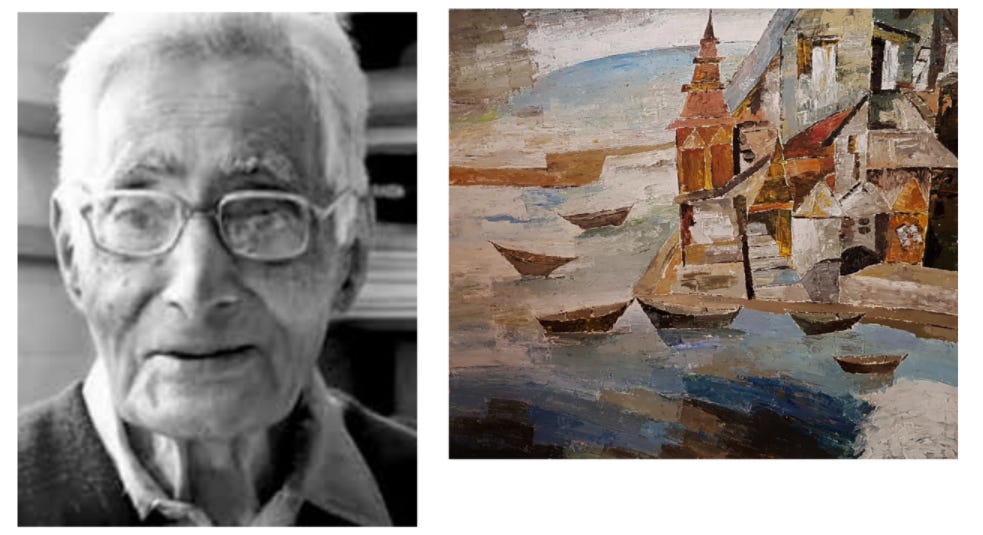In today’s newsletter, we celebrate some of the famous artists of India.
Amrita Sher-Gil (1913-1941)
Amrita Sher-Gil died at only 30 years of age, and was considered one of the most important painters of 20th-century India. She has been called "one of the greatest avant-garde women artists of the early 20th century" and a "pioneer" in modern Indian art.
Sher-Gil travelled throughout her life to various countries including Turkey and France, deriving heavily from precolonial Indian art styles and its current culture.
She is also known for her remarkable self-portraits.
F.N. Souza (1924-2002)
Souza was born in Goa, where he studied at the Senior JJ School of Art in Bombay. He was expelled in 1945 for his support for the Quit India Movement.
Souza joined the Communist Party of India in 1947. He was a founding member of the Progressive Artists' Group of Bombay, and was the first post-independence Indian artist to achieve high recognition in the West. Souza's style exhibited both low-life and high energy.
Souza’s paintings rejected convention and the banality of everyday life, and many of them explored erotic subjects.
Tayeb Mehta (1925-2009)
Tayeb was born in Kapadvanj, a town in Gujarat. He was known for his paintings of figures set amidst diagonal shapes of color. His paintings on Kali, Mahishasur and Celebration came into notice of the entire world and fetched prices in million of dollars through auction houses.
During his stay at Santiniketan, he came up with a number of triptych paintings that were later collectively known as the Santiniketan Triptych Series- one of his most famous painting series.
Ram Kumar (1924-2018)
Ram Kumar was born in Himachal Pradesh. He was an Indian artist and writer, and has been described as one of India's foremost abstract painters. Ram Kumar studied painting in New Delhi and Paris. He is a vital part of first generation post-colonial Indian artists, a member of the fabled “Progressive Artist’s Group”, alongside F. N. Souza, S. H. Raza and M. F. Husain.
Kumar has held solo and group exhibitions worldwide, including London, New York, France, Japan and throughout India. His early work includes figurative and landscaped based works.
Raja Ravi Varma (1848-1906)
Raja Ravi Varma was a celebrated Indian painter and artist. He is considered among the greatest painters in the history of Indian art for a number of aesthetic and broader social reasons.
Firstly, his works are considered the best examples of fusion of European techniques with a purely Indian sensibility. While continuing the tradition and aesthetics of Indian art, his paintings employed the latest European academic art techniques of the day.
Secondly, he was notable for making affordable lithographs of his paintings available to the public, which greatly enhanced his reach and influence as a painter and public figure. Indeed his lithographs increased the involvement of common people with fine arts and defined artistic tastes among common people for several decades. In particular, his depictions of Hindu deities and episodes from the epics and Puranas have received profound acceptance from the public and are found, often as objects of worship, across the length and breadth of India.
Raja Ravi Varma was closely related to the royal family of Travancore of present-day Kerala state in India.
Like what you read? Share this article with your friends and follow us on:
Instagram | Medium | Facebook








